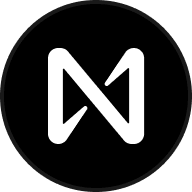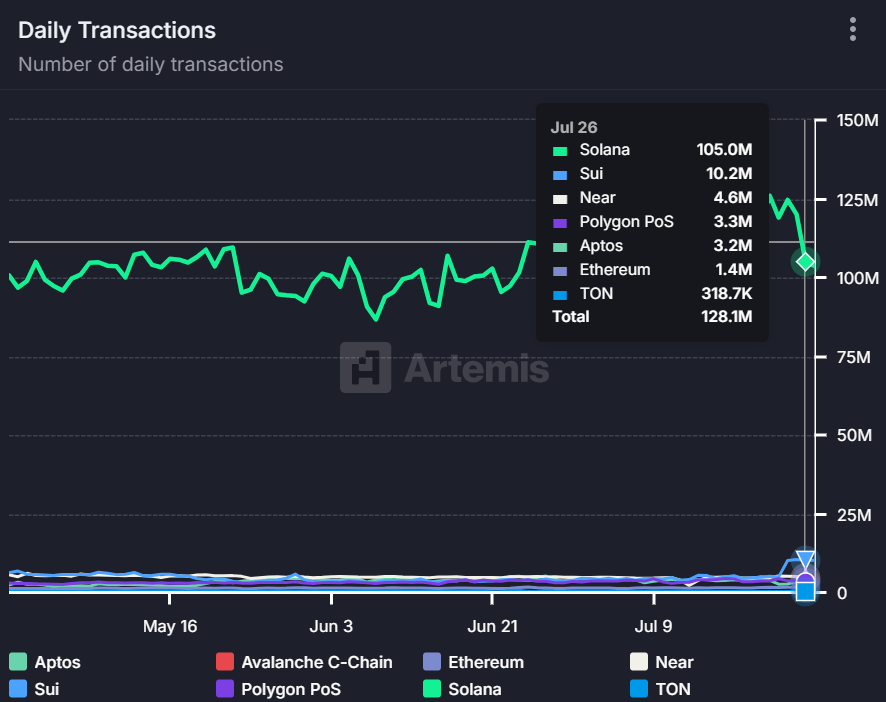Cours de Near Protocol
en USD

À propos de Near Protocol

Avis de non-responsabilité
Performance du cours de Near Protocol
Near Protocol sur les réseaux sociaux
Guides

Créez gratuitement un compte OKX.
Approvisionnez votre compte.
Choisissez votre crypto.
FAQ Near Protocol
Near Protocol est une plateforme blockchain de couche 1 de pointe, connue pour sa scalabilité et ses transactions rapides grâce à son mécanisme de sharding.
Near Protocol intègre le sharding, une technique qui divise le réseau en segments plus petits (ou shards), optimisant ainsi les vitesses de transaction et les performances globales du réseau.
Achetez facilement des jetons NEAR sur la plateforme de cryptomonnaies OKX. Les paires de trading disponibles dans le terminal de trading au comptant OKX incluentNEAR/BTC,NEAR/USDCetNEAR/USDT.
Vous pouvez également acheter du NEAR avec plus de 99 monnaies fiduciaires en sélectionnant le mode « ».Achat express" option. Autres jetons crypto populaires, tels queBitcoin (BTC),Ethereum (ETH),Tether (USDT)etJeton en USD (USDC)sont également disponibles.
En outre, vous pouvez échanger vos cryptomonnaies existantes, y comprisXRP (XRP),Cardano (ADA),Solana ( SOL)etChainlink (LINK), pour NEAR sans frais ni glissement de prix en utilisantOKX Convert.
Pour voir les prix de conversion en temps réel estimés entre monnaies fiduciaires, telles que l'USD, l'EUR, la GBP et d'autres, en NEAR, visitez leCalculatrice convertisseur de cryptos OKX. La plateforme d'échange de cryptomonnaies à haute liquidité d'OKX garantit les meilleurs prix pour vos achats de cryptomonnaie.
Plongez dans l’univers de Near Protocol
En 2020, le secteur de la finance décentralisée (DeFi) a connu une croissance significative, entraînant une explosion des applications décentralisées (dApps) sur le réseau Ethereum. Cette augmentation a mis en évidence certains des défis de scalabilité d'Ethereum, soulignant la nécessité d'une solution plus robuste. En réponse à ce besoin, Near Protocol est apparu comme une plateforme de cloud computing axée sur la communauté visant à atténuer ces contraintes.
Qu'est-ce que Near Protocol?
NEAR est une plateforme de cloud computing axée sur la communauté qui adopte le mécanisme de consensus Proof of Stake (PoS). Avec son interface conviviale et ses capacités de smart contracts, NEAR vise à permettre aux développeurs de concevoir et de déployer facilement des dApps innovantes et des solutions DeFi. De plus, sa conception unique permet aux utilisateurs d'interagir avec des dApps et des contrats intelligents sans avoir besoin d'un portefeuille.
L'équipe Near Protocol
Erik Trautman, un entrepreneur doté d'une expérience à Wall Street et fondateur de Viking Education, a été le pionnier de NEAR. À ses côtés se trouvent les co-fondateurs Illia Polusukhin, ancien employé de Google, et Alexander Skidanov, ancien employé de Microsoft. Sous leur direction, NEAR a rassemblé un groupe de développeurs talentueux, comprenant des médaillés d'or du Concours International de Programmation Collégiale.
Comment fonctionne Near Protocol?
En utilisant la technologie de sharding, NEAR améliore la vitesse et le volume des transactions. En distribuant sa charge de calcul sur plusieurs shards, chaque nœud n'exécute que le code pertinent pour son shard assigné, ce qui optimise la scalabilité. Le système d'exploitation blockchain de NEAR (BOS), basé sur JavaScript, garantit aux développeurs l'utilisation d'un langage de programmation familier. La plateforme propose des composants prêts à l'emploi, ce qui facilite le développement de produits plus rapides. De plus, les utilisateurs peuvent accéder rapidement au système sans avoir besoin de posséder ou d'utiliser de la cryptomonnaie.
Tokenomie des jetons NEAR
Le jeton natif de NEAR, NEAR, a été lancé le 13 octobre 2020, avec une offre totale de 1 milliard de jetons. Le jeton offre plusieurs cas d'utilisation, de paiement des frais de gaz de transaction au staking pour des récompenses. De plus, il joue un rôle dans la gouvernance, le stockage des données et l'accès aux services et applications sur le protocole Near.
Distribution de NEAR
NEAR a été distribué de la manière suivante:
- 17,2 pour cent : Subventions et programmes communautaires
- 15,23 pour cent : Tour de financement initial
- 14 pour cent : Contributeurs principaux
- 11,76 pour cent : Développement précoce de l'écosystème
- 11,4 pour cent : Subventions opérationnelles
- 12 pour cent : Ventes communautaires
- 10 pour cent : Fondation
- 8,41 pour cent : Tour de financement par capital-risque
Near Protocol: Le futur
Conçu pour la robustesse et l'efficacité, NEAR offre une plateforme sans intermédiaires, permettant aux utilisateurs de publier et d'héberger indépendamment des applications. Cet engagement envers le progrès se reflète dans leur annonce du troisième trimestre 2023, annonçant la phase 2 du sharding pour améliorer le processus de sharding et renforcer la scalabilité.
Déclaration ESG


































